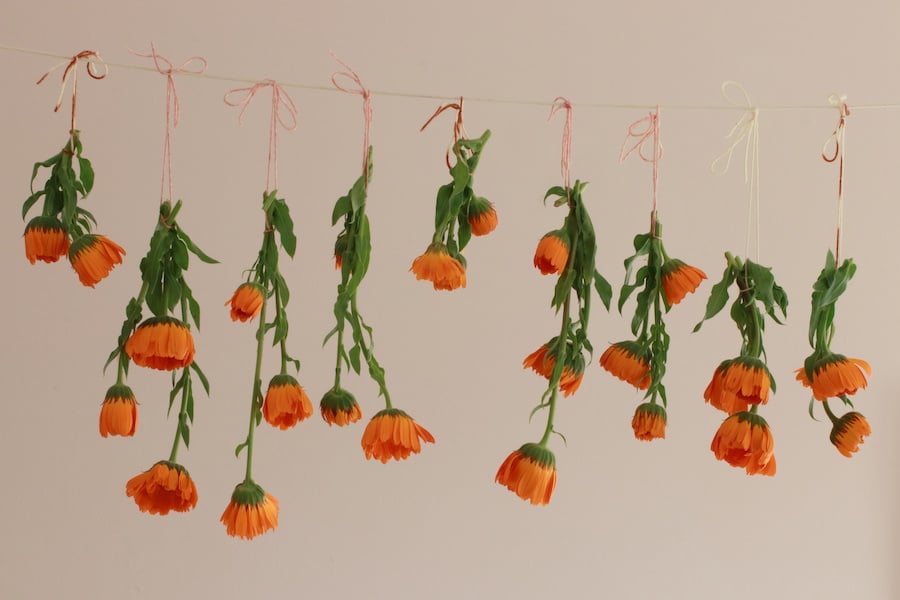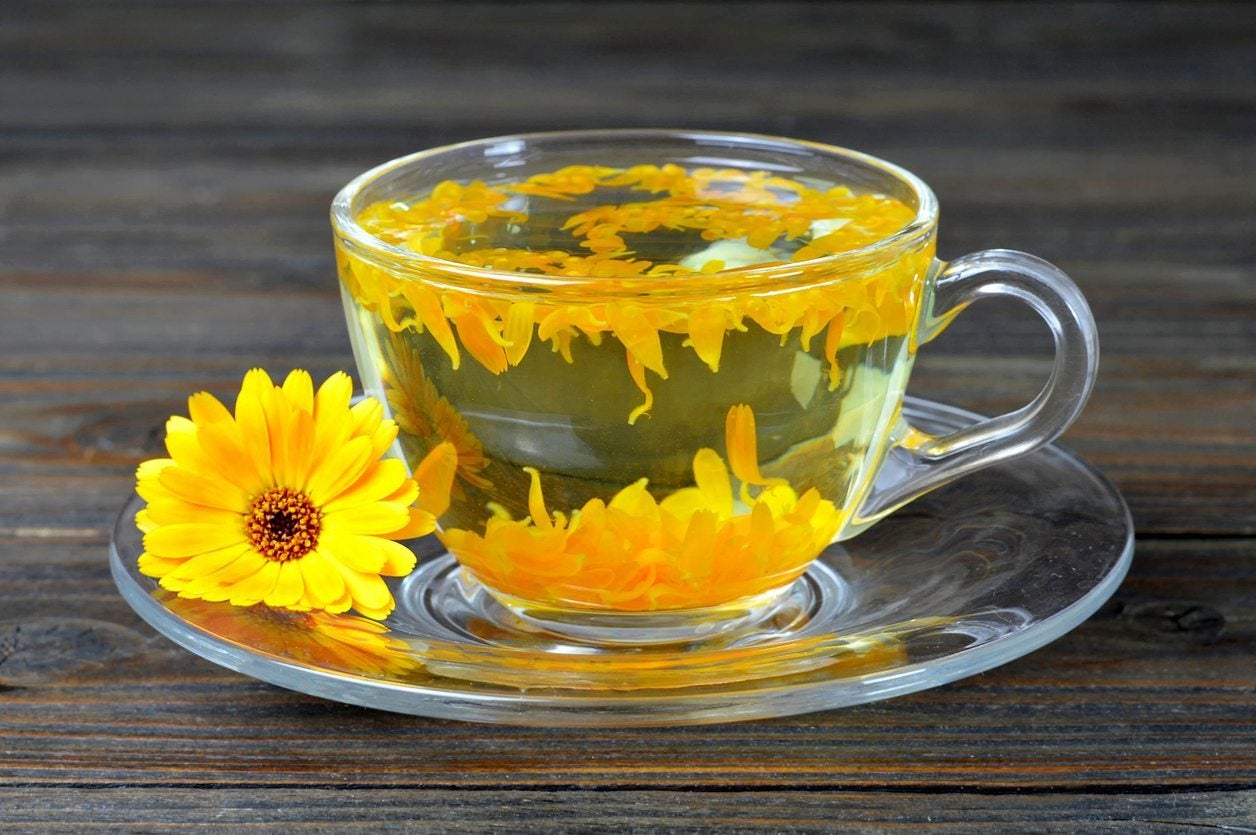Bright and cheery calendula blossoms aren’t just a pretty addition to the garden – they can also be used to make a nourishing herbal tea Calendula tea has been valued for centuries for its ability to support immune health, soothe inflammation, and promote skin healing.
If you want to enjoy the benefits of calendula tea from your own garden, you’ll need to properly harvest and dry the flowers. Follow this simple guide to harvesting and preparing your calendula for tea.
When to Harvest Calendula Flowers for Tea
-
Harvest calendula blossoms when they are fully open and vibrantly colored.
-
Pick flowers in the morning after any dew has dried. Mid-morning is ideal once flowers have opened fully.
-
Harvest flowers regularly, at least every 2-3 days during peak blooming. Frequent harvesting prolongs the bloom period.
-
For the most medicinal value, use fresh young flowers. Older fading flowers will be less potent for tea.
How to Harvest Calendula Blossoms
-
Use clean pruners or scissors to snip off each flower just above the base where it meets the stem
-
Or pinch flowers off carefully by hand, cradling each blossom as you detach it.
-
Handle flowers gently to avoid bruising. Place directly into a basket or tray.
-
Leaves and stems have benefits too. Harvest these as well if blossoms are limited.
-
Leave some flowers untouched for pollinators and to produce seeds for next year.
Preparing Calendula Blossoms for Drying
Before drying, it’s important to:
-
Remove any insects, dirt, or debris – gently wash if needed.
-
Allow freshly harvested blossoms to sit for 1-2 hours. This gives insects a chance to leave.
-
Gently pat flowers dry if rinsed. Do not wash right before drying.
-
Spread flowers out in a single layer, avoiding clumps.
How to Dry Calendula Blossoms for Tea
There are two main methods for drying calendula flowers for tea:
Air Drying
-
Spread flowers face-down on racks or screens in a warm, well-ventilated area out of direct sunlight.
-
Turn flowers periodically and allow 1-3 weeks for thorough drying.
-
Test for brittleness when petals crumble easily between fingers.
Using a Dehydrator
-
Arrange flowers face-down on dehydrator trays in a single layer, avoiding overlap.
-
Set temperature to 95°F to 100°F maximum to retain medicinal properties.
-
Dry until completely brittle and crumbling, 1-5 days depending on humidity.
-
Check larger flowers carefully and split them open to check centers.
Storing Dried Calendula Blossoms
-
Place thoroughly dried blossoms or petals in sealed glass jars kept out of light.
-
Store in a cool, dark place and use within 1 year for maximum potency.
-
If any moisture or condensation appears, return flowers to dehydrator to dry further.
Making Calendula Tea
Once dried, calendula blossoms can be steeped into a beneficial herbal tea.
-
Use 2-3 tablespoons dried blossoms (or 4-6 whole heads) per cup of water.
-
Pour boiling water over the calendula and steep 10 minutes, covered.
-
Strain tea through a fine mesh sieve or tea filter before drinking.
-
Sweeten with honey or lemon if desired. Drink tea warm.
Proper harvesting and drying techniques allow you to enjoy calendula’s soothing properties in tea form year-round. Follow these simple steps for maximizing calendula’s medicinal benefits from your garden to teacup.
Drying Calendula in a Dehydrator
- Calendula blossoms with stems and leaves
- Put the flower petals that are still on their stems and leaves into a large bowl of clean, cold water. Move the dirt around, lift the calendula, and pour out the water. Do this step one more time, or until the water is clear.
- Place the calendula on a towel to dry. Cover with a second towel and gently blot.
- To dry the flowers, cut them off near the base and put them on the shelves in a single layer. Leave a bit of space in between each blossom. Arrange the stems/leaves single layer on separate shelves.
- Turn your dehydrator on. If there is a thermostat, set it to 125ºF. Please keep in mind that some websites say to set the temperature to 95ºF, but I find that it takes about 24 hours for the base of the flowers to dry completely at that temperature. The flower petals don’t get “cooked” at 125oF; they dry in 8 to 10 hours. “.
- Rotate the trays periodically from top to bottom. Because the back of the dehydrator might be hotter than the front, turn the trays around as well. You will need to be more careful and turn the trays more often if your dehydrator doesn’t have a thermostat or a circulating fan.
- The leaves will dry before the blossoms. Take the leaves’ trays out of the dehydrator when they are dry and brittle. Let them cool down all the way. Once it’s cool, separate the leaves from the stems and put them in mason jars or other glass jars with tight lids. You won’t use the stems; you can put them in your compost pile.
- The flowers might need a few more hours to dry all the way. The petals will dry before the base on the bottom. Be patient and wait until the entire blossom is dry. The flowers should be completely cool before being put into the jars with the dried leaves. Once they are ready, take the trays off the heat. Store out of direct sunlight while the herb conditions.
- Once a day, shake the jars to separate the pieces and look for mold and water. If condensation forms in a jar, put the calendula back in the dehydrator.
- After this process has been going on for 7 to 10 days, you can pack the jars more tightly and keep them somewhere cool, dry, and dark.

How to Harvest Calendula from the Garden for Calendula Tea
FAQ
What part of calendula is used for tea?
Do you use the whole flower for calendula tea?
When should calendula be harvested?
How do you prepare calendula for medicinal use?
How to harvest Calendula for making tea?
Harvesting calendula for making tea involves picking the plants at the right time. Harvest the flowers when they are in full bloom and dry them properly. As you pick some, more will grow. Try to harvest in the morning when the plants are perky.
How do you use Calendula petals for tea?
When using fresh calendula petals for tea, harvest them from the garden immediately before using. Boil the water for the tea. If you are using a tea ball, place calendula petals into the ball, and secure it shut. Fill your tea cup with hot water, and then add the tea ball and steep for 10 to 15 minutes.
Can you make Calendula tea with fresh flowers?
Calendula tea can be made with either fresh calendula flowers when in season, or with dried calendula flowers at any time of the year. The fresh flowers have a more enhanced flavor in a herbal infusion, although the same volume of petals is used for both types of tea.
Can Calendula be grown for tea?
Calendula is not only known for its ornamental value, but also for its use in making tea. Many people grow calendula for tea. Calendula blossoms have long been renowned for their healing properties and have been found useful for wounds, inflammations of the skin and mouth, and sunburns.
- A Complete Guide to Caring for Yuki Cherry Blossom Shrub - January 23, 2025
- Identifying Red Hot Poker Seeds: What to Look For When Harvesting Torch Lily Pods - January 23, 2025
- A Complete Guide to Harvesting Evening Primrose Seeds - January 23, 2025

